Web Persephone: DNA Motif Search
To highlight DNA motifs, right-click anywhere on a physical map, and select DNA motif search from the popup menu to open the DNA motif search dialog:
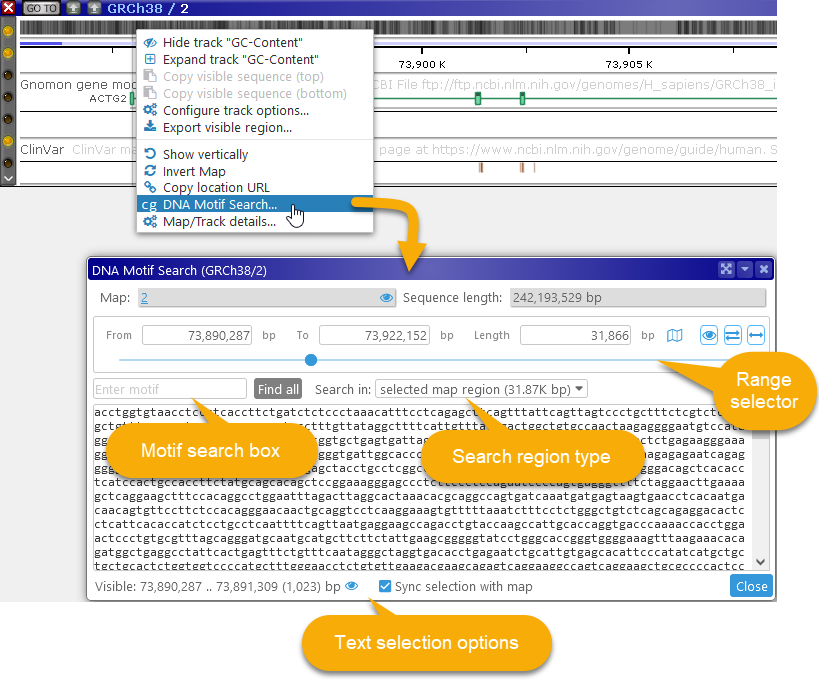
This dialog displays the DNA sequence of the currently visible map region. For now, the maximum allowed region length for motif search is 2Mbp; if the currently visible region on the map is longer than that, the range will be clipped to 2Mbp.
If you right-click inside a highlight and choose the DNA motif search (highlighted region) menu option, the highlighted region will be pre-selected in the DNA motif search dialog; but you can also adjust the selected map region manually (as described below).
You may also find it useful to dock the dialog to the bottom of the screen: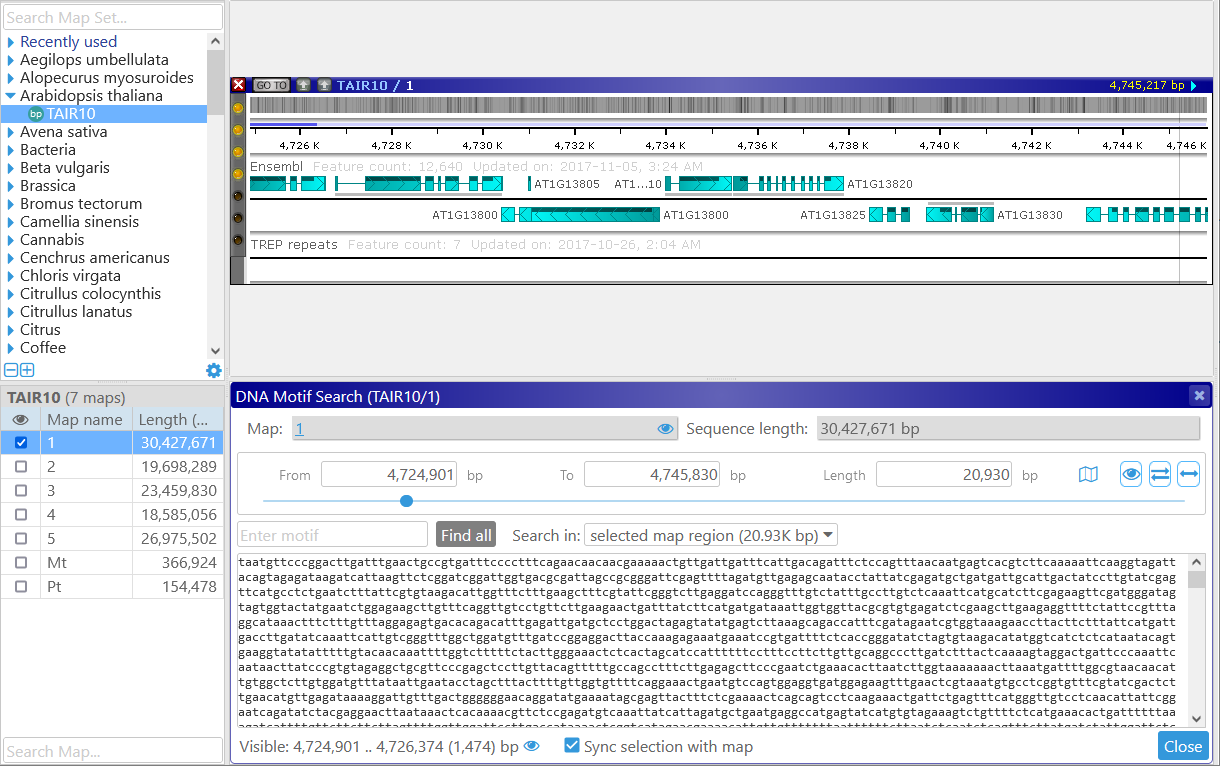
Selecting the sequence range
The Map region selector at the top of the dialog allows for fine-grained control of the search range; note that any highlights on the map are also highlighted in the sequence box:
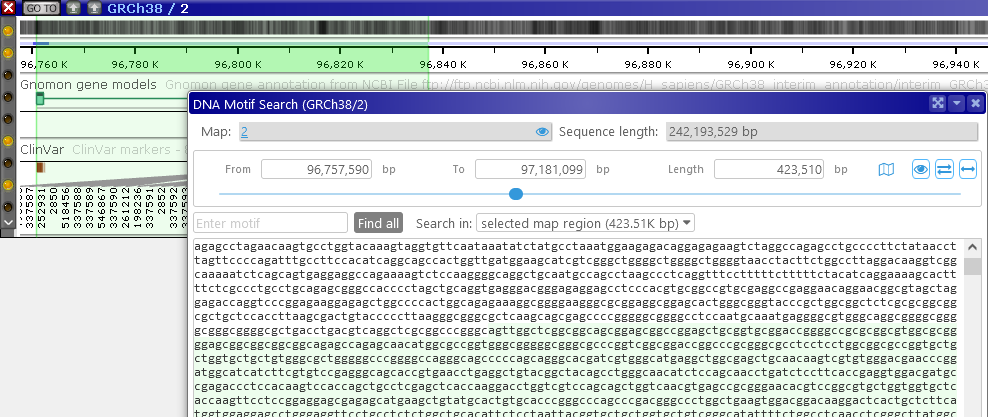
The currently selected sequence range is also shown schematically on the map itself, right above the Ruler: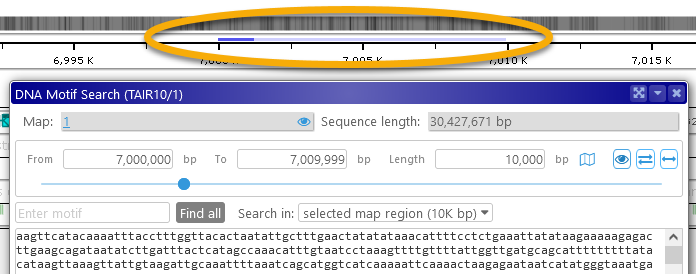
The solid blue line indicates the sequence fragment that is currently visible in the sequence box; the faint blue line indicates the entire selected region. Click the![]() button at the bottom of the dialog to zoom the map to the currently visible sequence fragment. For example, you could scroll down in the box, and then zoom the map to the currently visible sequence fragment:
button at the bottom of the dialog to zoom the map to the currently visible sequence fragment. For example, you could scroll down in the box, and then zoom the map to the currently visible sequence fragment:
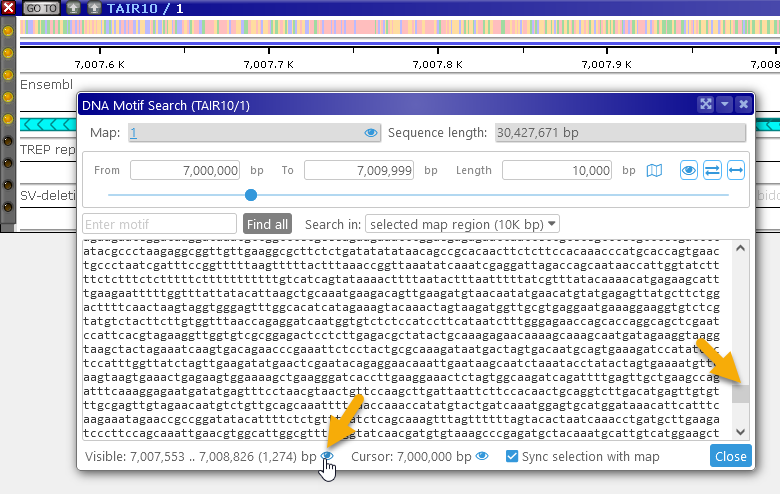
When you select text in the sequence box, this selection is automatically synchronized with the map, and vice-versa:
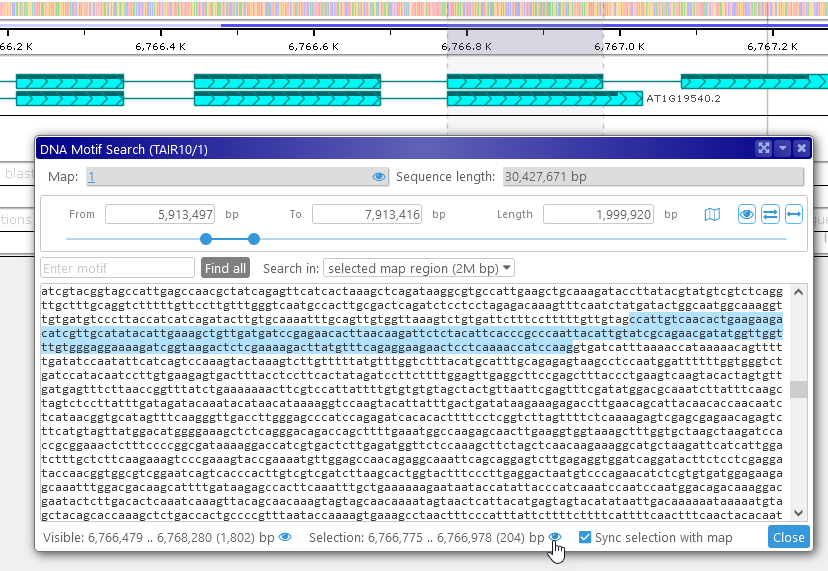
Click the ![]() button next to the selection to zoom the map to it, or uncheck the Sync selection with map checkbox to disable this behavior.
button next to the selection to zoom the map to it, or uncheck the Sync selection with map checkbox to disable this behavior.
Searching for motifs
To search for a DNA motif, type it in the search box:
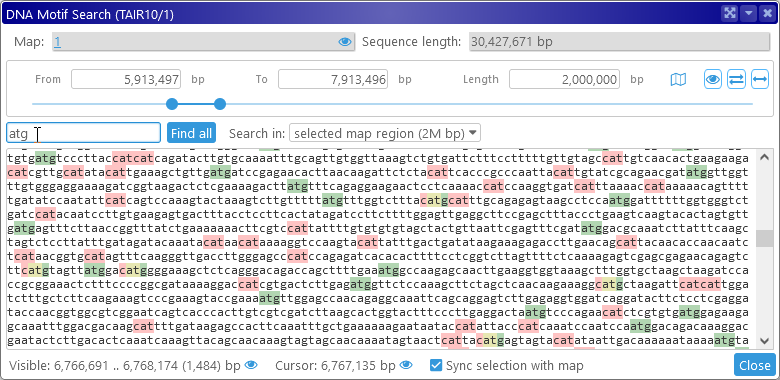
Instances of the motif that are found on the forward strand are immediately highlighted in green; those on the opposite strand in red; and overlaps in yellow. You can enter exact nucleotides, or wildcards:
- Standard IUPAC codes: match the relevant nucleotides. For example, "s" matches g or c; "n" matches any nucleotide.
- "stop" or "*": when entered by itself, matches the stop codons TAG, TAA, and TGA.
To reveal all of the matches on the map, click the Find all button. By default, Persephone will only search for the motif in the currently selected region, as specified in the Search region type dropdown box:

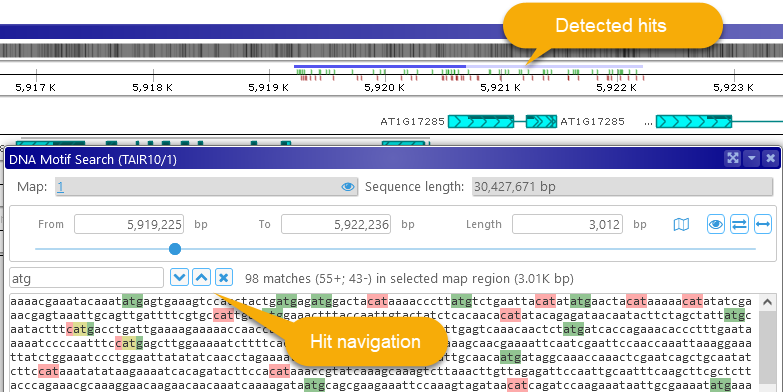
All of the matches are displayed in small sub-track above the Ruler; as usual, you can zoom in to the individual nucleotide level to examine the hits in more detail:
Use the hit navigation buttons to quickly jump between motif hits:
 Move to the next hit,
Move to the next hit, Move to the previous hit,
Move to the previous hit, Clear the search.
Clear the search.
Note that match statistics (number of matches in total and on each strand) are displayed next to the hit navigation buttons.
You can also change the Search region type to entire map to find a motif of interest anywhere on the map, not just in the selected region (although doing so may take some time). For example, you can look for the centromere motif on the entire Human Chromosome 2:



